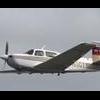the infamous gear actuators
-
Members Online
- Bpvlbv
- Lincoln
- 65MooneyPilot
- dzeleski
- TCC
- Andy95W
- jcovington
- Ibra
- Rusty Pilot
- mooneyflyer
- Greg Ellis
- 231DF
- mmcdaniel33
- Van Lanier
- RescueMunchkin
- jlunseth
- Pembroke Advisor
- 00-Negative
- gabez
- Jake@BevanAviation
- UMRPIlot8
- Rmnpilot
- PeterRus
- 231MJ
- Jakes Simmons
- Rmfriday
- JRose
- eman1200
- affricate
- 201er
- N201MKTurbo
- kortopates
- Richie the C
- pilot_jb


Recommended Posts
Join the conversation
You can post now and register later. If you have an account, sign in now to post with your account.